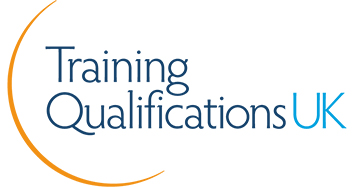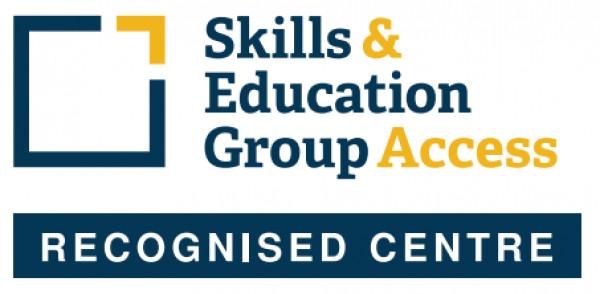Massage
 89.3%
89.3%
- SALE Savings End Midnight Tuesday 13th January
- SALE Savings End Midnight Tuesday 13th January
Massage
This course at a glance
- Explore the fascinating world of massage therapy and the human body
- Learn a variety of massage techniques, from remedial to Shiatsu
- Understand the profound massage benefits for both mind and body
- No prior experience or qualifications needed
- Study online, at home, at your own pace with our flexible online massage course
- Gain a learndirect Certificate of Achievement in Massage
About your course
Getting started
Modules
Module 1: Introduction, Touch, The Qualities of a Healer, The Subtle Body
- Introduce massage, the importance of touch, and explain the various subtle bodies
- Evaluate the Chakra and Meridian Systems
- List the qualities a good healer must have
- Discuss the 3 parts included in the Subtle body
Module 2: The Effects of Stress on the Body and Mind, Levels of Organisation
- Examine stress the bodily systems that it affects and summarise nutritional effects it can have on the body
- List 4 areas in which stress can affect us with a description of each areas
- Examine your understanding of the term ‘burnout’
- Identify 4 processes considered important in maintaining/supporting the immune system
Module 3: Cells and Tissues, The Skin
- Discuss the role that cells and tissues play in the body and describe the skin and its various functions
- Summarise the purpose of the skin
- Describe the following layers of the skin:
- Dermis
- Epidermis
- List 3 waste products the skin produces
- Examine the regulation of body temperature
Module 4: Skeletal System
- Evaluate the support and movement systems of the body
- Introduce 4 types of bones and give their location
- Examine the purpose of the vertebral column
- List the vertebrae giving their corresponding numbers
Module 5: Muscular System
- Describe the structure, function and location of the muscles
- Identify 3 types of muscle tissue and discuss their function
- Discuss your understanding of cramp
- Evaluate the meaning of Fibrositis
Module 6: Nervous System
- Introduce and explain the Central Nervous System
- Identify the 3 layers which cover the brain
- Summarise the purpose of the cerebrospinal fluid
- Discuss how the sympathetic and parasympathetic nervous systems differ
Module 7: Endocrine System
- Discuss the location and functions of the Endocrine Glands identifying the hormones they secrete
- Examine why endocrine glands are referred to as ductless
- Describe the location of the pituitary gland
- Identify the 2 hormones secreted by the posterior pituitary gland
Module 8: Special Senses
- Identify and examine the 7 special senses
- Analyse the 3 outer layers of the eye
- Evaluate the bones that the auditory ossicles are made up of
- Discuss the part of the ear that influences a persons balance
Module 9: Digestive System
- Evaluate the importance of food to our bodies and introduce the organs of digestion
- List vitamins that are fat soluble
- Identify the process of food absorption by the body
- Explain the purpose of the liver
- Describe the 2 organs which are relative to digestion
Module 10: Respiratory System
- Examine the functions of the Respiratory System showing the location of respiratory organs
- Define the 3 different section the pharynx can be divided into
- Discuss the location and processes of gas exchange
- Explain the technique of breathing
Module 11: Circulatory System
- Discuss in detail the various aspects of the Circulatory System
- Analyse the composition of blood
- Summarise the principle functions of the blood
- Identify how blood is circulated around the body
Module 12: Lymphatic System
- Describe the Lymphatic System and its functions
- Examine the purpose of lymphatic nodes
- List 8 principle nodes in the body and the areas they drain
- Summarise what role the thymus plays in the body
Module 13: Urinary System
- Examine the location and functions of organs making up the Urinary System
- Discuss the 4 sections that the Urinary System is composed of
- Describe how the kidney produces urine
- Analyse the role the bladder plays in the body
Module 14: Reproductive System
- Evaluate the male and female Reproductive Systems in detail
- Identify 4 internal organs of the female reproductive system
- Discuss the following:
- Fallopian Tubes
- Uterus
- Examine the primary function of mammary glands
Module 15: Preparing for Massage, Oils That Can Be Used, Contra-indications
- Discuss preparations required prior to treatment and pros and cons of massage
- Summarise why touch is so important to a therapist
- Describe how you would prepare for a massage session
- Analyse the primary advantages to massage
Module 16: Massage Movements Discussed and Illustrated
- Introduce the oils used in Aromatherapy and identify the principle massage strokes
- Explain the importance of oils in Massage
- Examine 2 strokes that are found in the percussion group
- Identify how gliding strokes are beneficial to a client
Module 17: Remedial Massage for Common Disorders
- Examine percussion and deep tissue massage, analysing the important areas to focus on
- Describe how you would perform the following massage procedures and discuss their benefits:
- Fingertip Pressure
- Heel of hand pressure
- Hacking
- Cupping
- Pummelling
- Identify disadvantages of massaging a client’s stomach
- Summarise the necessity of covering an area with a towel when it is not being worked on
Module 18: Shiatsu Massage
- Analyse techniques used in a Shiatsu treatment and identify the main meridians of the body
- Describe the cupped hand procedure
- Discuss the purpose of the vital force
- Summarise your conception of Shiatsu Massage
Module 19: Shiatsu Procedure
- Identify the sequence best suited for the therapist to ensure the body is massaged effectively
- Introduce the importance of performing massage in a certain sequence
- Describe how you would apply massage to the lower back area
- Discuss a complaint that can be relieved by massaging a client’s neck area
Module 20: Conclusion, Business Opportunity
- Examine the essential oils and their healing properties and discuss logistics of setting up a practice
- Introduce the advantages of essential oils
- Summarise the 3 steps to consider when starting your own business
For a more detailed syllabus on this course, click here
Entry Requirements
There is no experience or previous qualifications required for enrolment on this online massage course. It is available to all students, of all academic backgrounds.
Minimum age restriction
You must be aged 16 or older to enrol.
Average completion timeframe
The average time it takes our learners to complete the course is 1 year.
Assessment requirements
After each lesson, there will be a question paper to complete.
Placement or Practical required
There are no placements or practicals involved in this course.
Exams required
After each lesson there will be a question paper
Is Membership Required?
No membership is required to enrol the course.
Course Fees
All course fees, inclusive of all payment plans including our Premium Credit Limited option, must be settled before certification can be ordered.
*You will have access to the course for 24 months.

Assessment Method
After each lesson there will be a question paper, which needs to be completed and submitted to your personal tutor for marking. This method of continual assessment ensures that your personal tutor can consistently monitor your progress and provide you with assistance throughout the duration of the course. This will help you master the various massage techniques and theory.
On successful completion of your course you will receive the learndirect Certificate of Completion of Training in Massage.
Your course certificate will also state the number of CPD points/hours the course is eligible for.
View a sample of the certificate (opens in new window)
learndirect is one of the largest integrated providers of courses and qualifications, training, and employment services in the UK
- Each year around 6,000 businesses equip their staff for success with learndirect
- learndirect have helped more than 75,000 businesses equip their employees with the skills needed to improve productivity.
- Almost 700,000 maths and English test passes have been achieved with learndirect.
- 300,000 people fulfilled their career ambitions last year with learndirect.
- Over 250,000 apprentices have achieved with learndirect.
Career
This course is designed for personal enrichment and skill development for those interested in the practice of massage therapy. While it doesn't lead to a formal vocational qualification, it provides a solid foundation of knowledge and understanding in various massage techniques and the human body. Whether you're exploring a personal interest or seeking to understand the historical and practical aspects of massage, this course offers a unique learning journey. This is an excellent way to begin your massage training online and explore a fascinating field.
Frequently Asked Questions
- SALE Savings End Midnight Tuesday 13th January
- SALE Savings End Midnight Tuesday 13th January
Massage
This course at a glance
- Explore the fascinating world of massage therapy and the human body
- Learn a variety of massage techniques, from remedial to Shiatsu
- Understand the profound massage benefits for both mind and body
- No prior experience or qualifications needed
- Study online, at home, at your own pace with our flexible online massage course
- Gain a learndirect Certificate of Achievement in Massage
About your course
Getting started
Modules
Module 1: Introduction, Touch, The Qualities of a Healer, The Subtle Body
- Introduce massage, the importance of touch, and explain the various subtle bodies
- Evaluate the Chakra and Meridian Systems
- List the qualities a good healer must have
- Discuss the 3 parts included in the Subtle body
Module 2: The Effects of Stress on the Body and Mind, Levels of Organisation
- Examine stress the bodily systems that it affects and summarise nutritional effects it can have on the body
- List 4 areas in which stress can affect us with a description of each areas
- Examine your understanding of the term ‘burnout’
- Identify 4 processes considered important in maintaining/supporting the immune system
Module 3: Cells and Tissues, The Skin
- Discuss the role that cells and tissues play in the body and describe the skin and its various functions
- Summarise the purpose of the skin
- Describe the following layers of the skin:
- Dermis
- Epidermis
- List 3 waste products the skin produces
- Examine the regulation of body temperature
Module 4: Skeletal System
- Evaluate the support and movement systems of the body
- Introduce 4 types of bones and give their location
- Examine the purpose of the vertebral column
- List the vertebrae giving their corresponding numbers
Module 5: Muscular System
- Describe the structure, function and location of the muscles
- Identify 3 types of muscle tissue and discuss their function
- Discuss your understanding of cramp
- Evaluate the meaning of Fibrositis
Module 6: Nervous System
- Introduce and explain the Central Nervous System
- Identify the 3 layers which cover the brain
- Summarise the purpose of the cerebrospinal fluid
- Discuss how the sympathetic and parasympathetic nervous systems differ
Module 7: Endocrine System
- Discuss the location and functions of the Endocrine Glands identifying the hormones they secrete
- Examine why endocrine glands are referred to as ductless
- Describe the location of the pituitary gland
- Identify the 2 hormones secreted by the posterior pituitary gland
Module 8: Special Senses
- Identify and examine the 7 special senses
- Analyse the 3 outer layers of the eye
- Evaluate the bones that the auditory ossicles are made up of
- Discuss the part of the ear that influences a persons balance
Module 9: Digestive System
- Evaluate the importance of food to our bodies and introduce the organs of digestion
- List vitamins that are fat soluble
- Identify the process of food absorption by the body
- Explain the purpose of the liver
- Describe the 2 organs which are relative to digestion
Module 10: Respiratory System
- Examine the functions of the Respiratory System showing the location of respiratory organs
- Define the 3 different section the pharynx can be divided into
- Discuss the location and processes of gas exchange
- Explain the technique of breathing
Module 11: Circulatory System
- Discuss in detail the various aspects of the Circulatory System
- Analyse the composition of blood
- Summarise the principle functions of the blood
- Identify how blood is circulated around the body
Module 12: Lymphatic System
- Describe the Lymphatic System and its functions
- Examine the purpose of lymphatic nodes
- List 8 principle nodes in the body and the areas they drain
- Summarise what role the thymus plays in the body
Module 13: Urinary System
- Examine the location and functions of organs making up the Urinary System
- Discuss the 4 sections that the Urinary System is composed of
- Describe how the kidney produces urine
- Analyse the role the bladder plays in the body
Module 14: Reproductive System
- Evaluate the male and female Reproductive Systems in detail
- Identify 4 internal organs of the female reproductive system
- Discuss the following:
- Fallopian Tubes
- Uterus
- Examine the primary function of mammary glands
Module 15: Preparing for Massage, Oils That Can Be Used, Contra-indications
- Discuss preparations required prior to treatment and pros and cons of massage
- Summarise why touch is so important to a therapist
- Describe how you would prepare for a massage session
- Analyse the primary advantages to massage
Module 16: Massage Movements Discussed and Illustrated
- Introduce the oils used in Aromatherapy and identify the principle massage strokes
- Explain the importance of oils in Massage
- Examine 2 strokes that are found in the percussion group
- Identify how gliding strokes are beneficial to a client
Module 17: Remedial Massage for Common Disorders
- Examine percussion and deep tissue massage, analysing the important areas to focus on
- Describe how you would perform the following massage procedures and discuss their benefits:
- Fingertip Pressure
- Heel of hand pressure
- Hacking
- Cupping
- Pummelling
- Identify disadvantages of massaging a client’s stomach
- Summarise the necessity of covering an area with a towel when it is not being worked on
Module 18: Shiatsu Massage
- Analyse techniques used in a Shiatsu treatment and identify the main meridians of the body
- Describe the cupped hand procedure
- Discuss the purpose of the vital force
- Summarise your conception of Shiatsu Massage
Module 19: Shiatsu Procedure
- Identify the sequence best suited for the therapist to ensure the body is massaged effectively
- Introduce the importance of performing massage in a certain sequence
- Describe how you would apply massage to the lower back area
- Discuss a complaint that can be relieved by massaging a client’s neck area
Module 20: Conclusion, Business Opportunity
- Examine the essential oils and their healing properties and discuss logistics of setting up a practice
- Introduce the advantages of essential oils
- Summarise the 3 steps to consider when starting your own business
For a more detailed syllabus on this course, click here
Entry Requirements
There is no experience or previous qualifications required for enrolment on this online massage course. It is available to all students, of all academic backgrounds.
Minimum age restriction
You must be aged 16 or older to enrol.
Average completion timeframe
The average time it takes our learners to complete the course is 1 year.
Assessment requirements
After each lesson, there will be a question paper to complete.
Placement or Practical required
There are no placements or practicals involved in this course.
Exams required
After each lesson there will be a question paper
Is Membership Required?
No membership is required to enrol the course.
Course Fees
All course fees, inclusive of all payment plans including our Premium Credit Limited option, must be settled before certification can be ordered.
*You will have access to the course for 24 months.

Assessment
Assessment Method
After each lesson there will be a question paper, which needs to be completed and submitted to your personal tutor for marking. This method of continual assessment ensures that your personal tutor can consistently monitor your progress and provide you with assistance throughout the duration of the course. This will help you master the various massage techniques and theory.
Qualifications
On successful completion of your course you will receive the learndirect Certificate of Completion of Training in Massage.
Your course certificate will also state the number of CPD points/hours the course is eligible for.
View a sample of the certificate (opens in new window)
learndirect is one of the largest integrated providers of courses and qualifications, training, and employment services in the UK
- Each year around 6,000 businesses equip their staff for success with learndirect
- learndirect have helped more than 75,000 businesses equip their employees with the skills needed to improve productivity.
- Almost 700,000 maths and English test passes have been achieved with learndirect.
- 300,000 people fulfilled their career ambitions last year with learndirect.
- Over 250,000 apprentices have achieved with learndirect.
Career
This course is designed for personal enrichment and skill development for those interested in the practice of massage therapy. While it doesn't lead to a formal vocational qualification, it provides a solid foundation of knowledge and understanding in various massage techniques and the human body. Whether you're exploring a personal interest or seeking to understand the historical and practical aspects of massage, this course offers a unique learning journey. This is an excellent way to begin your massage training online and explore a fascinating field.
Frequently Asked Questions
 89.3%
89.3%
learning
learning hours





















 If you find this course cheaper anywhere
If you find this course cheaper anywhere

